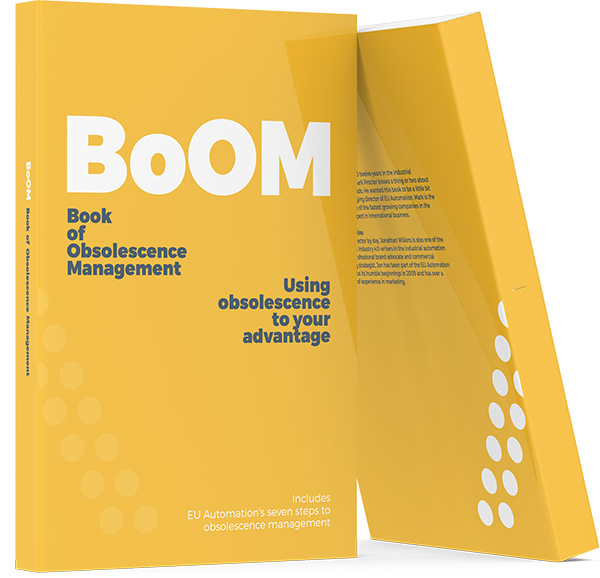Book of Obsolescence Management

We now stand blinking in the dawn of the fourth industrial revolution, excited at the promise of interconnected smart futures. But what will this innovation mean for product life cycles? What will obsolescence look like in Industry 4.0?
This book teaches you how to use obsolescence to your advantage and also features our own trusted seven-step obsolescence plan. We want to help consumers, manufacturers and suppliers better understand how obsolescence, whether we are aware of it or not, affects all industries and sectors across the globe.


Listen to a preview

Develop your knowledge and skillset at your own leisure by listening to the audiobook version.
What's inside?
Unearth everything there is to know about obsolescence management by listening to the audiobook version of BoOM. Available for free on all major streaming services.
-
Chapter 1:
Obsolescence - why it matters >
Chapter 1:
Obsolescence - why it matters
We live in an interconnected world of tech, progress and innovation. Ambition drives us to transcend boundaries previously thought insurmountable - it's what took us to the Moon with technology that had less processing power than the smartphone in your pocket and more importantly, it got us back to Earth too.
-
Chapter 2:
Obsolescence in consumer environments >
Chapter 2:
Obsolescence in consumer environments
Whether it's your phone, your car or your coffee maker, every consumer product has a lifespan. What you might not know is that this lifespan is sometimes predetermined by the manufacturer. Planned obsolescence is a strategy in which the obsolescence of a product is built into the product from its conception.
-
Chapter 3:
Obsolescence in Industry >
Chapter 3:
Obsolescence in Industry
When an obsolete device breaks down and causes production to stop, every minute costs thousands of pounds. It is up to plant managers to find a swift solution. However, sourcing obsolete parts is not as easy as ringing the OEM and having one shipped out.
-
Chapter 4:
Sticking to standards >
Chapter 4:
Sticking to standards
Regardless of whether we are talking about strict sector regulations for process industries, such as pharmaceuticals, or widely applicable changes to energy efficiency, product testing or obsolescence, complying with the latest legislation has always felt like running an obstacle course.
-
Chapter 5:
Managing obsolescence >
Chapter 5:
Managing obsolescence
Dealing with obsolescence is all about meticulous planning. If you have a large facility or plant, obsolescence management can be a full-time job. Luckily, this is why we have obsolescence managers. Obsolescence doesn't have to be a logistical nightmare and can be used to your advantage to keep critical applications up and running.
-
Chapter 6:
The sustainability race >
Chapter 6:
The sustainability race
It is fair to say that the term obsolete often conjures up negative connotations, especially in the world of engineering and technology. Many industry experts associate obsolete devices with expense, downtime and maintenance headaches. Despite what you might think, obsolete parts can help soothe efficiency worries.
-
Chapter 7:
Seven steps to obsolescence management >
Chapter 7:
Seven steps to obsolescence management
Obsolescence management is a complicated and delicate science that involves significant planning and intricate product lifecycle knowledge. For those of you wondering where in the world to start when it comes to managing obsolesce, fear not. We have put together a handy seven-step guide for obsolescence management in industrial environments.
4.0 Sight
Industrial revolutions are not new...what is changing is the speed at which they are occurring.
4.0 Sight charts the digital journey for manufacturers in various countries around the world, taking an in-depth look at the key trends and challenges facing the industry.





